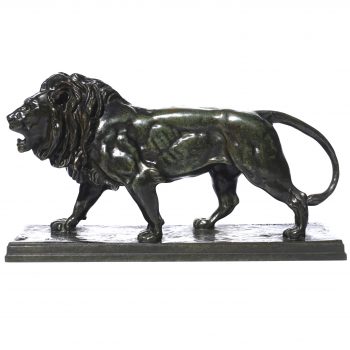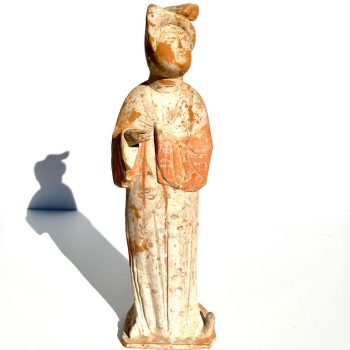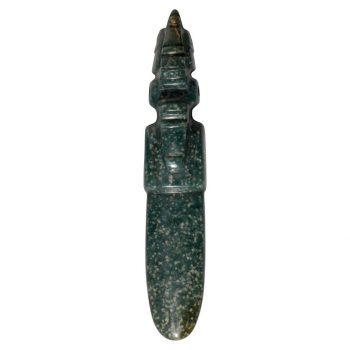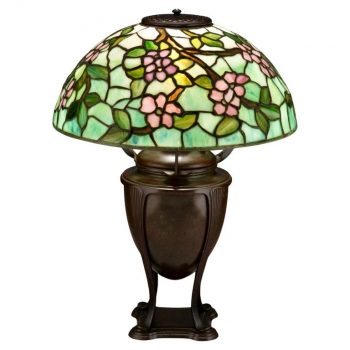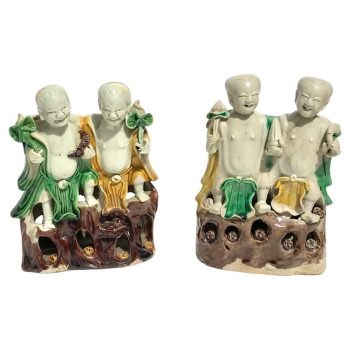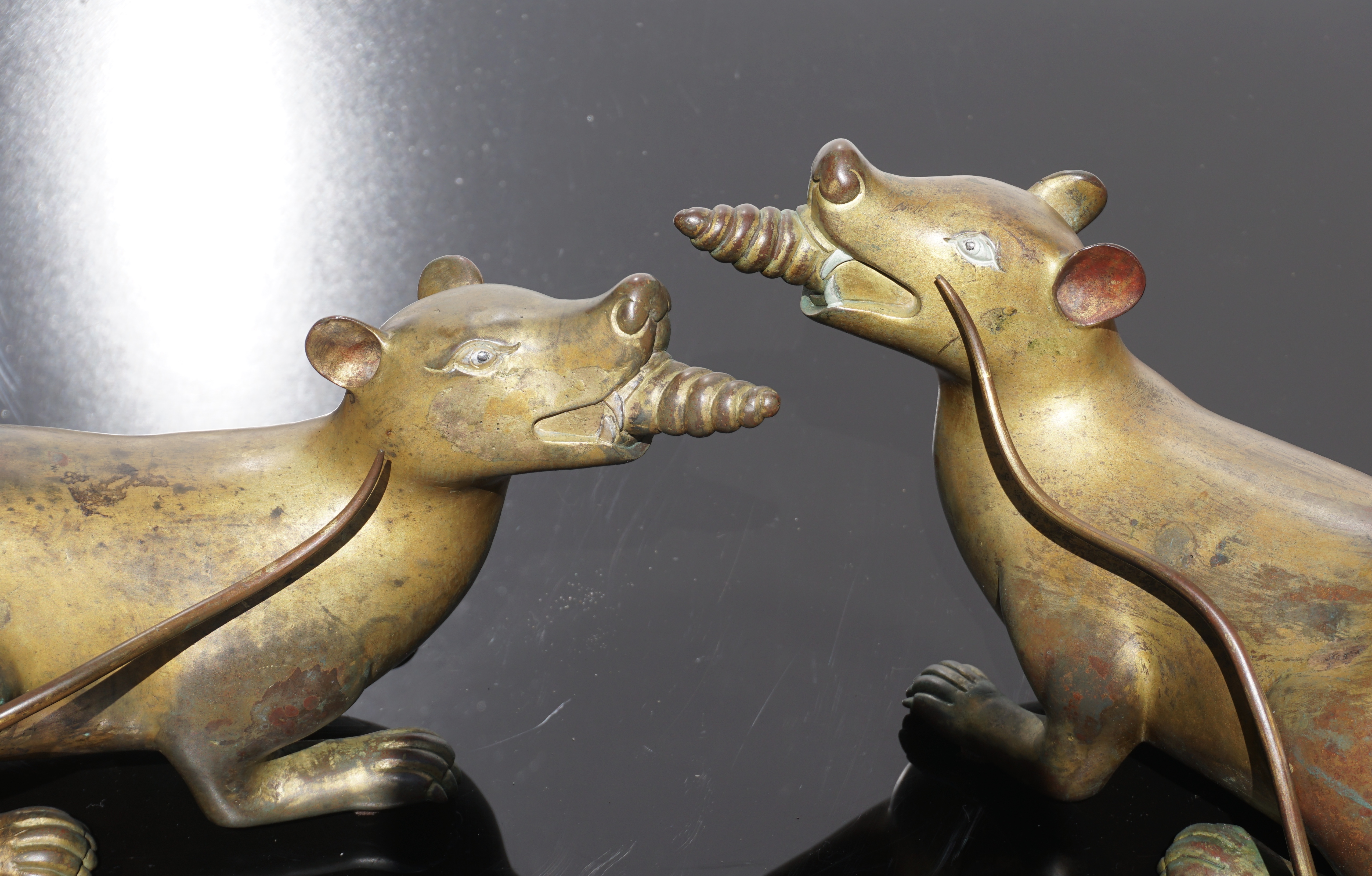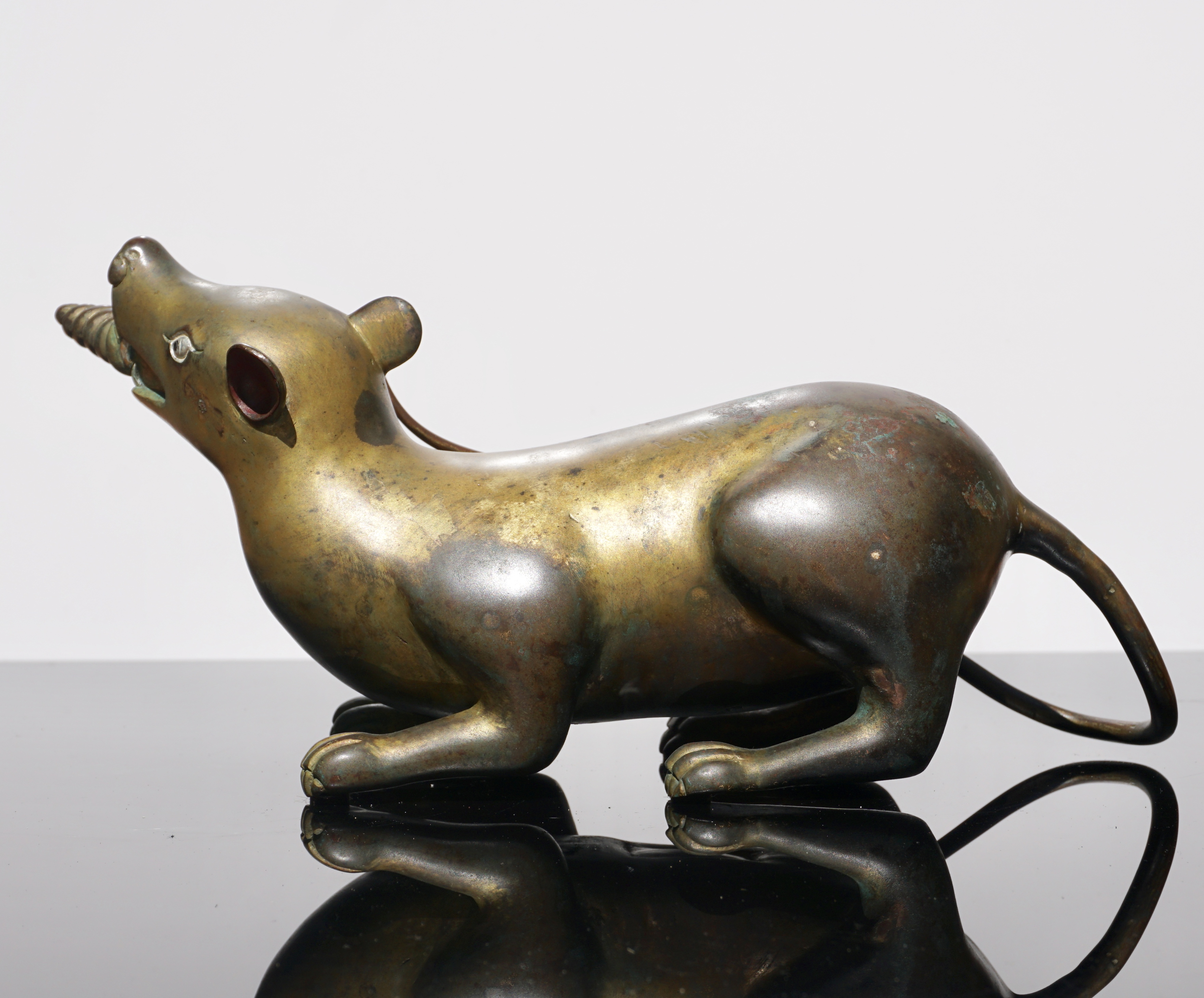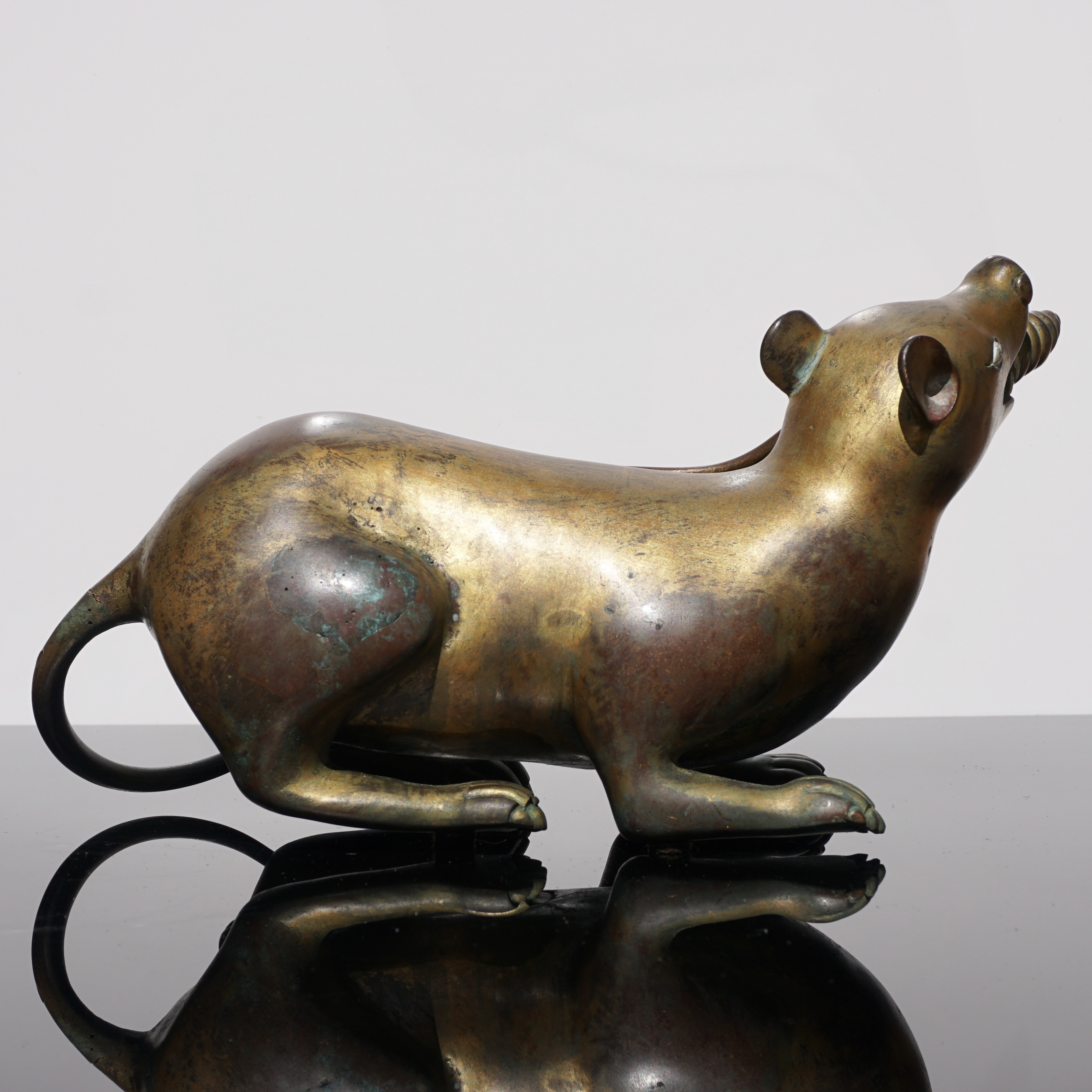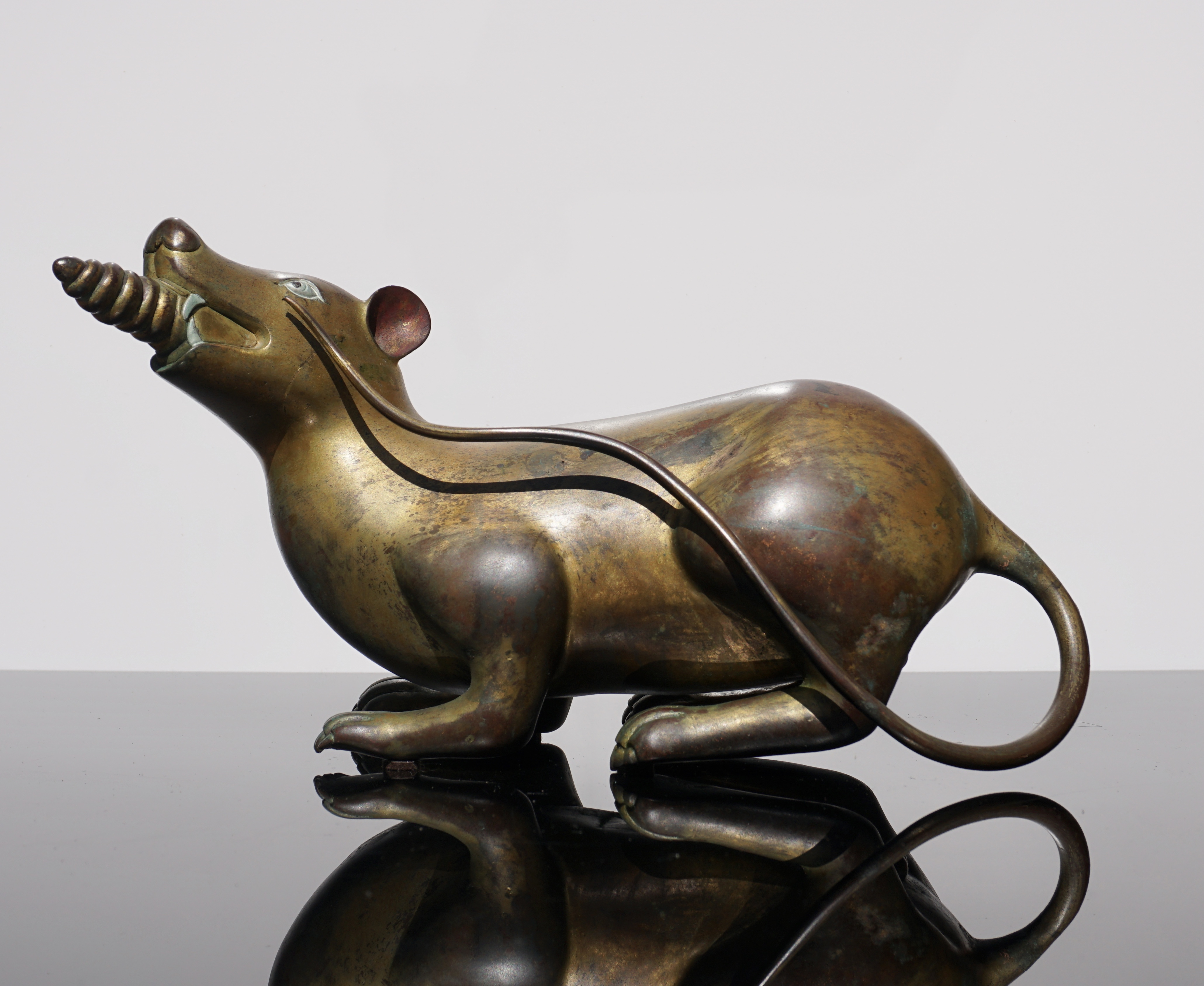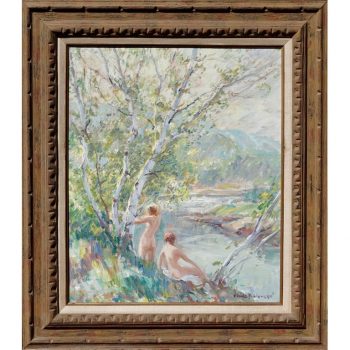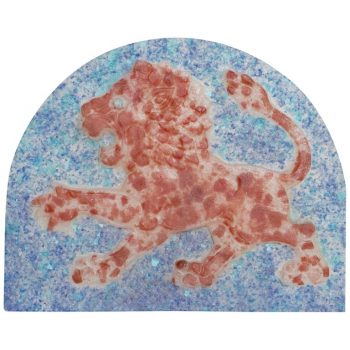Description
A extremely rare pair Tibetan gilt bronze beast figures of a male and female rats, circa 16th century with gilt gold wash. They show their age and are wonderful and auspicious decorative Buddhist items.
Comps on these items could not be found on the World Wide Web except for their sister mongoose figures that sold for over $50K. Vary rare items. Very heavy almost solid casts.
Measures: Height 6 inches Width 13 inches Depth 4.5 inches
Naturalistically modeled with heads raised, the male to its left and the female to its right, and holding a jewel-like object in their mouths, the ears rounded, the claws of each foot clearly delineated, the tails long and wavy, the undersides of each with sex-specific genitalia.
In Buddhist mythology the Rat or nakula is associated with Jambhala, God of material and spiritual wealth, who is usually shown holding one of these creatures on his lap, from where it proceeds to vomit forth a heavy stream of gems. These two individually cast mongoose once stood on each side of a jewel-hoard, or ratna kosa, in front of a statue representing the God of Wealth. Instead of vomiting out a stream of gems, they each grasp an enigmatic object – perhaps a jewel offering of some sort – in their outstretched and very effectively toothed mouths.
A mid-15th century thangka from Tibet of Ganapati shows his vehicle which is always a rat, or musaka, spitting out jewels as if it were a mongoose, or nakula – (see note below). Tibetan sculptors and painters were hardly concerned with the taxonomies of the two separate species – on the contrary, characteristically, they reached a syncretistic and symbolic composite by conflating the attributes of both animals. Our bronzes are probably mongooses, as seen by the rather substantial thickening of their tales at the base.
The Dharma Chakra, or Wheel of the Law, flanked by a pair of deer, symbolizes the first sermon preached by the newly enlightened Buddha, in the deer park at Sarnath. As a symbol of the Buddhist Doctrine, this grouping is known to Buddhists everywhere, from the earliest periods. Just such an ensemble in gilt bronze is – with the stag on the right, the doe on the left – stands on the roof of the Jokhang Temple in Lhasa, the founding temple of Tibetan Buddhism. From the inclination of their heads, these mongooses were placed in a similar configuration either side of a central heap of jewels, at the front of an altar of Jambhala.



